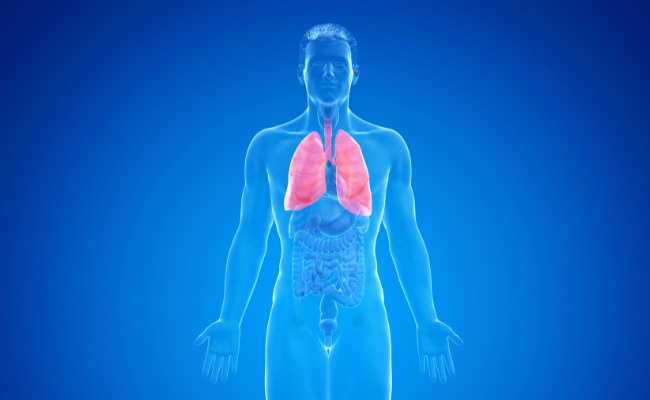How to Treat Idiopathic Pulmonary Fibrosis?
- December 27, 2023
- No Comments

What is Idiopathic Pulmonary Fibrosis (IPF)?
Idiopathic Pulmonary Fibrosis (IPF) represents a progressive and irreversible lung ailment characterized by the development of scar tissue within the lungs. The term "idiopathic" highlights the enigma surrounding its origin, as the cause remains unknown. Over time, IPF transforms lung tissue, making it thicker, stiffer, and scarred, thereby impeding optimal lung function. The cumulative effect of this fibrosis is a gradual deterioration that manifests as respiratory difficulties and a decline in overall lung capacity.
In the intricate dance of breathing, where oxygen traverses through tiny air sacs in the lungs to enter the bloodstream, IPF disrupts this delicate harmony. The condition initiates the formation of dense scar tissue within the lungs, creating a significant challenge to the act of breathing. As time progresses, the impact of IPF intensifies, exacerbating the complexities associated with respiration and placing a growing burden on individuals grappling with this lung condition.
Why is Idiopathic Pulmonary Fibrosis a Concern?
IPF poses a significant health concern due to its relentless progression and the lack of a known cure. The exact cause of IPF remains unclear, although it is believed to involve a combination of genetic and environmental factors. The condition primarily affects individuals over the age of 50, and its prevalence increases with age. IPF significantly impairs the quality of life, leading to symptoms such as persistent cough, shortness of breath, fatigue, and diminished exercise tolerance.
How Does Idiopathic Pulmonary Fibrosis Develop?
The development of IPF involves a complex interplay of factors. While the exact cause remains elusive, certain risk factors and mechanisms contribute to the progression of the disease. Genetic predisposition is thought to play a role, as some families have a higher incidence of IPF. Exposure to environmental factors like tobacco smoke, occupational dust, and certain viral infections may also contribute to the development of the disease.
The hallmark of IPF is the abnormal and excessive deposition of collagen, a structural protein, in the lung tissue. This fibrotic process leads to the formation of scar tissue, compromising the normal elasticity of the lungs. As the disease progresses, breathing becomes increasingly difficult, and the lung's ability to transfer oxygen into the bloodstream is impaired.
Treatment Solutions for Idiopathic Pulmonary Fibrosis:
- Antifibrotic Medications: Two medications, pirfenidone and nintedanib, are approved for the treatment of IPF. These drugs aim to slow down the progression of fibrosis by targeting specific pathways involved in the scarring process.
- Immunosuppressive Therapy: In some cases, corticosteroids or other immunosuppressive medications may be prescribed to reduce inflammation and slow down the fibrotic process. However, the effectiveness of these medications in IPF is debated, and they are not universally recommended.
- Oxygen Therapy: Supplemental oxygen is often prescribed to alleviate symptoms of shortness of breath and improve oxygen levels in the bloodstream. Oxygen therapy can enhance the patient's ability to engage in daily activities and improve overall quality of life.
- Pulmonary Rehabilitation: Pulmonary rehabilitation programs involve a combination of exercise, education, and support for individuals with respiratory conditions. These programs are designed to improve physical conditioning, enhance breathing techniques, and provide psychological support.
- Lung Transplantation: In advanced cases where other treatments are ineffective, lung transplantation may be considered. Lung transplantation can significantly improve the quality of life for individuals with end-stage IPF, but it is a complex and resource-intensive procedure with potential risks and challenges.
Benefits of Treatment for Idiopathic Pulmonary Fibrosis:
- Slowing Disease Progression: Antifibrotic medications have demonstrated efficacy in slowing down the progression of IPF, offering patients the potential to maintain a higher level of lung function for a more extended period.
- Improved Symptom Management: Oxygen therapy, pulmonary rehabilitation, and other supportive measures contribute to better symptom management. These interventions can enhance the patient's ability to perform daily activities and reduce the impact of breathlessness on their daily life.
- Enhanced Quality of Life: Despite the progressive nature of IPF, treatment modalities aim to improve the overall quality of life for affected individuals. By addressing symptoms and slowing disease progression, patients may experience a better quality of life and increased functional capacity.
- Increased Survival Rates: While IPF remains a life-limiting condition, early diagnosis and appropriate treatment can potentially extend survival rates. Antifibrotic medications, in particular, have been associated with improved survival outcomes.
- Transplantation as a Life-Saving Option: Lung transplantation, though reserved for severe cases, can be a life-saving option for individuals with end-stage IPF. Successful transplantation can offer a chance for a significantly improved and extended life.
Comments (0)